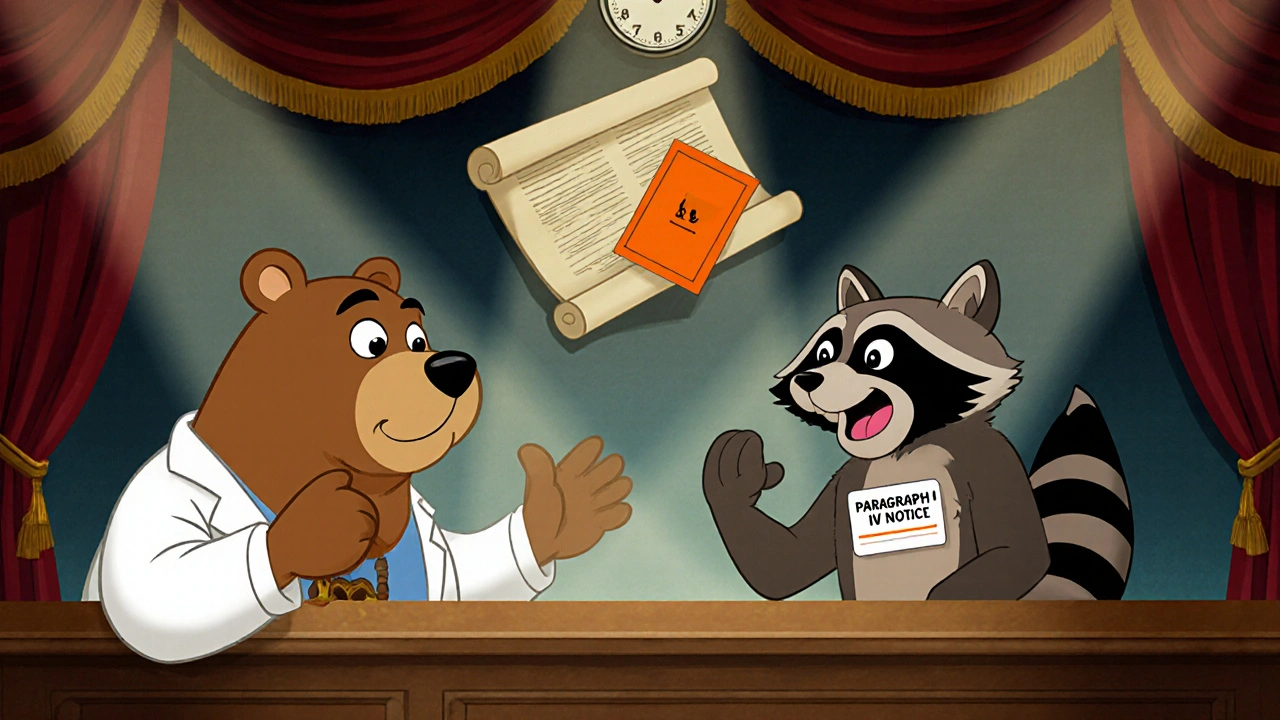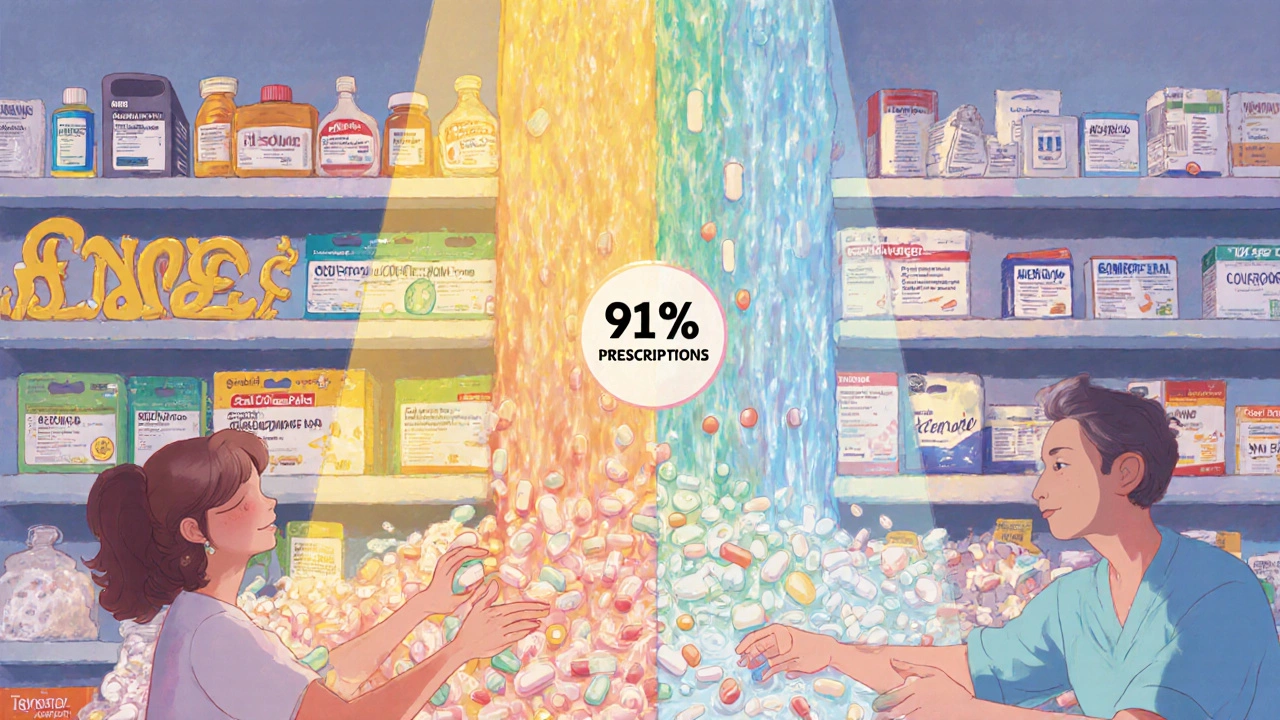When a new drug hits the market, it doesn’t just appear out of nowhere. It’s the result of over a decade of research, clinical trials, and billions of dollars spent trying to make something that works. But once that drug becomes successful, other companies can copy it - legally - as soon as the patent runs out. That’s where patent law steps in. It’s not about stopping competition. It’s about making sure innovation has a chance to pay for itself before the copycats arrive.
How Patents Give Drug Companies a Fair Shot
Pharmaceutical patents last 20 years from the date they’re filed. Sounds long, right? But here’s the catch: the clock starts ticking the moment the patent is submitted - not when the drug finally gets approved by the FDA. That process can take 8 to 12 years. So by the time a drug is on shelves, the company might only have 8 to 12 years left to sell it before generics show up.
That’s why the average effective market exclusivity for a new drug is around 12 to 14 years. During that window, companies charge high prices. Why? Because developing a single new drug costs about $2.6 billion on average. That money doesn’t come from thin air. It comes from profits made during those exclusive years. Without that protection, no company would risk investing in risky, expensive research.
Take Prozac. When its patent expired in 2001, Eli Lilly lost 70% of its U.S. market share in a single year. Sales dropped by $2.4 billion. That’s not just a business loss - it’s the kind of hit that makes investors think twice about funding the next big idea. Patents are the safety net that lets companies gamble on the next Prozac.
The Hatch-Waxman Act: The Balancing Act
In 1984, Congress passed the Drug Price Competition and Patent Term Restoration Act - better known as the Hatch-Waxman Act. Named after its two sponsors, Senator Orrin Hatch and Representative Henry Waxman, this law didn’t just protect patents. It created a system that lets generics enter the market without waiting for every patent to expire naturally.
Before Hatch-Waxman, generic makers couldn’t even start testing a copy of a branded drug until the patent expired. That meant years of delay. The law changed that. It allowed generic companies to begin development while the original patent was still active. But they couldn’t sell it until the patent ran out - unless they challenged it.
That’s where the Paragraph IV certification comes in. If a generic company believes a patent is invalid or won’t be enforced, they can file a legal notice saying so. That triggers a 45-day window for the brand company to sue for infringement. If they do, the FDA is forced to delay approval of the generic for up to 30 months - no matter whether the patent is actually valid. This is called the 30-month stay. It gives brand companies breathing room, even when the patent might be weak.
And here’s the kicker: the first generic company to successfully challenge a patent gets 180 days of exclusive rights to sell their version. No other generics can enter during that time. That’s a huge financial incentive. One company can make millions while others wait. That’s why so many generic firms take the risk - even when it means going to court.
How Generics Drive Prices Down - Fast
Once generics start arriving, prices don’t just drop. They collapse.
Branded drugs typically cost 80 to 85% more than their generic equivalents. Ibuprofen is a perfect example. When Boots’ Brufen patent expired in the 1980s, brands like Advil and Motrin flooded the market. Within a few years, the price per pill dropped by over 90%. Today, you can buy a bottle of generic ibuprofen for less than a dollar. The brand version? Still sold, but mostly because people don’t know it’s the same thing.
The numbers don’t lie. In the U.S., generics make up 91% of all prescriptions - but only 24% of total drug spending. In 2022 alone, they saved patients and insurers $373 billion. That’s not a small number. That’s enough to cover health care for millions of people who otherwise couldn’t afford treatment.
And the more generics that enter, the lower prices go. After the first generic, prices drop about 70%. By the time five generics are on the market, they’re often 90% cheaper than the original. That’s the power of competition.

The Dark Side: Evergreening and Patent Thickets
But the system isn’t perfect. Some companies don’t wait for patents to expire. They try to stretch them.
That’s called evergreening. It happens when a drugmaker files a new patent on something minor - like a new pill coating, a slightly different dosage schedule, or a new delivery method. These aren’t breakthroughs. They’re tweaks. But under current law, they still count as patents. And they can delay generics for years.
Humira is the poster child for this. The drug, used to treat autoimmune diseases, had over 240 patents filed across 70 different families. That’s not innovation - that’s a legal wall. Even though Humira’s original patent expired years ago, no biosimilar could enter the U.S. market until 2023 because of this patent thicket. In Europe, where the rules are tighter, biosimilars arrived in 2018.
The European Commission calls this kind of behavior an abuse of dominance. The U.S. doesn’t have the same rules. And while the FDA requires brand companies to list their patents in the Orange Book - a public database - it doesn’t check whether those patents are legitimate. That leaves the door open for abuse.
Pay-for-Delay and Other Tactics
Another trick? Pay-for-delay deals. Sometimes, instead of fighting in court, a brand company will pay a generic manufacturer to stay out of the market. The generic gets a cut of the profits. The brand keeps its monopoly. The public pays more.
The FTC estimates these deals cost consumers $3.5 billion every year. That’s money that could’ve gone to insulin, cancer drugs, or heart medications. In 2022, Congress tried to crack down with the Preserve Access to Affordable Generics and Biosimilars Act. But it hasn’t passed yet. The legal battles continue.

What’s Next for Patent Law?
The system is under pressure. Drug prices keep rising. Prescription spending hit $621 billion in 2022 - 22% of all U.S. health care costs. Meanwhile, the average time from patent expiry to generic entry has crept up from 2.1 years in 2005 to 3.6 years in 2020. That’s because litigation is getting longer, more complex, and more expensive.
But the core of Hatch-Waxman still holds. Over 97% of generic applications still use the Paragraph IV process. The 30-month stay is still in play. The 180-day exclusivity window still drives competition. The Orange Book still lists patents. The system works - even if it’s messy.
Recent laws like the CREATES Act (2022) are trying to fix loopholes. One big problem? Brand companies refusing to sell samples of their drugs to generic makers for testing. That delays development. CREATES makes that illegal. It’s a small step, but it matters.
And now, courts are questioning whether the Patent Trial and Appeal Board (PTAB) should even exist. Some say inter partes review - the process generics use to challenge patents - is unconstitutional. If that changes, it could make it harder for generics to enter the market.
Why This Matters to You
Whether you take a generic statin, a branded insulin, or a cheap antibiotic, you’re living in the world this law created. Patents protect innovation. Generics make treatment affordable. The tension between them isn’t a flaw - it’s the point.
The goal isn’t to eliminate patents. It’s to make sure they don’t become tools for endless monopolies. And it’s to make sure that when a drug saves lives, it doesn’t also bankrupt the people who need it.
Right now, the system is balanced - barely. But it’s not broken. It just needs smarter enforcement, fewer loopholes, and more transparency. Because innovation shouldn’t be a luxury. And medicine shouldn’t be a gamble.
How long do pharmaceutical patents last?
Pharmaceutical patents last 20 years from the date they’re filed. But because it takes 8 to 12 years to get FDA approval, the actual time a company has to sell the drug exclusively is usually only 12 to 14 years.
What is the Hatch-Waxman Act?
The Hatch-Waxman Act of 1984 created a legal framework that lets generic drug makers start developing copies of branded drugs before the patent expires. It also gives innovators extra patent time to make up for delays in FDA approval and offers the first generic challenger 180 days of exclusive sales.
Why are generic drugs so much cheaper?
Generic drugs cost 80-85% less because they don’t need to repeat expensive clinical trials. They prove they’re the same as the brand-name drug through simpler testing. The savings come from skipping R&D costs and from competition - the more generics enter, the lower prices drop.
What is evergreening in patent law?
Evergreening is when a drug company files new patents on minor changes - like a new pill shape, dosage, or delivery method - to extend market exclusivity beyond the original patent. These aren’t new treatments, just tweaks designed to block generics.
Do generics work as well as brand-name drugs?
Yes. The FDA requires generics to be bioequivalent to the brand-name drug - meaning they deliver the same amount of active ingredient at the same rate. They’re the same medicine, just cheaper. Over 91% of U.S. prescriptions are filled with generics.
What’s the Orange Book?
The Orange Book is the FDA’s public list of approved drug products with their patent and exclusivity information. Generic manufacturers use it to see which patents they might need to challenge before launching their version.
Can brand companies pay generics to delay entry?
Yes. These are called pay-for-delay deals. A brand company pays a generic maker to postpone launching its cheaper version. The FTC says these deals cost consumers $3.5 billion a year and are anti-competitive. Some laws aim to ban them, but they still happen.

